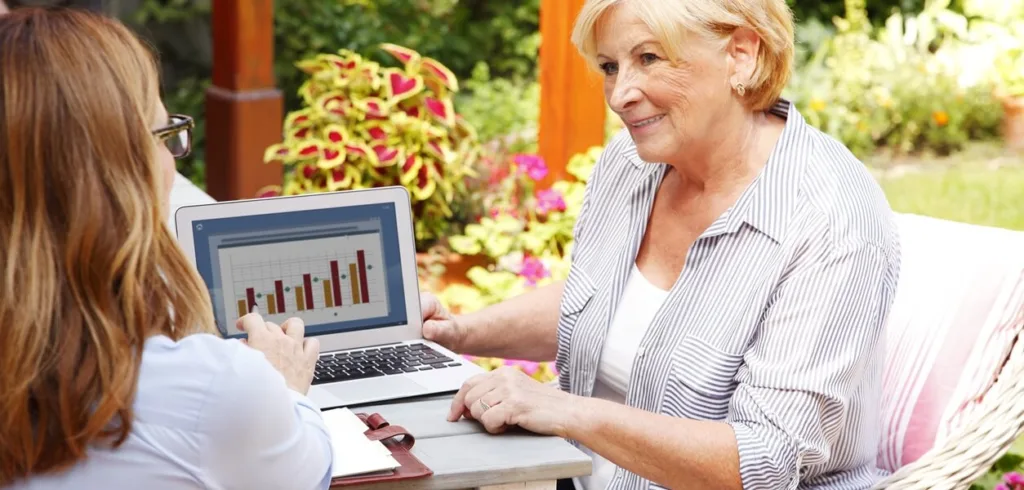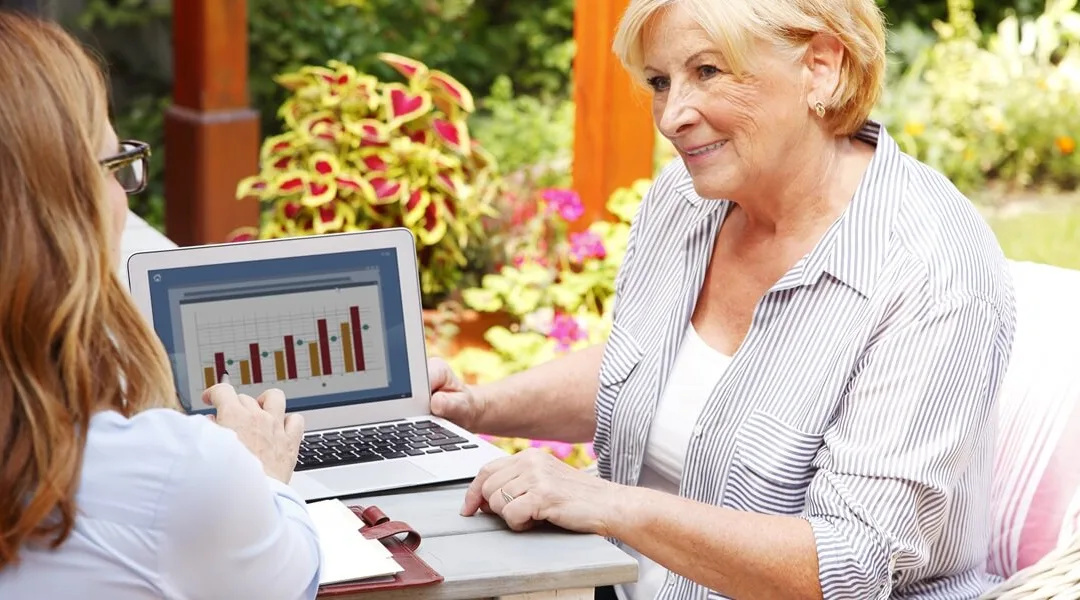
Keeping Retirement Simple – Part 1
I was looking into getting solar for the house to save on electricity bills and reduce our carbon footprint. I found it was pretty complicated, a lot to consider. Won’t someone make it simple for me? That made me think: this must be how our clients feel about approaching retirement finances – it’s even more complicated.
So, we’re putting together a series for you on the basics of retirement — the key principles, what you really need to know. Or “just the essentials.” We’ll cover the basic principles of retirement (funding) one step at a time.
A good retirement is about so much more than money – whole books are written about getting the most out of your life after ending full time work. But when the payslips end, you become responsible for funding your retirement necessities and your pursuits out of your “retirement resources.”
Through super and savings you’ve been getting ready, building a nest egg. It’s time to call on the nest egg and start drawing it down. It’s a big change in the way you need to think about your finances…and requires a bit of planning and forecasting to work out how much you can afford to spend and how to make the most out of your retirement.
Retirement Principle #1 The first rule of retirement finances might be: The greater your retirement resources, the more you can afford to spend in retirement.
No duh, eh? It sounds obvious that the bigger your nest egg, the more you can afford to spend. And that the opposite would be true too; the lower your retirement resources, the less you can spend.
But what are your retirement resources? How much do you really have? And if you’re not yet retired, but getting ready, what can you do to increase them?
Our James Coyle recently wrote about the Five Pillars of Retirement. These include: the Age Pension; Super; nonsuper savings and investments; the family home, if you own one; and employment income for those still working part time.
Some people might not normally think of the home as part of their retirement plan. But the home provides many advantages in retirement, including: a) not having to pay rent, b) being available for sale or downsizing to fund later years of retirement, and c) in serving as collateral for loans via reverse mortgages, including the Federal Government’s Home Equity Access Scheme.
And work continues to be important to many people as they get older. Our experience shows that a significant minority of our clients are still getting some employment income at 70 and older.
We’ll share separate articles on the Age Pension, Super, other savings and investments, and the home later on in this series. But let’s take a look at our Retirement Principle #1: “The greater your retirement resources, the more you can afford to spend in retirement” and show you what it looks like based on our clients.
We’ve had over 200,000 people use our Age Pension Eligibility Calculator. Let’s take a look at the typical people old enough for the Age Pension or Seniors Health Card and show how the level of resources drives the amount of money they could afford to spend each year in retirement.
We show a typical member from each of four key groups of age eligible people: Those likely to get the Full Age Pension (representing a bit over 10% of our clients), those getting the Part Age Pension (the biggest category of our clients – over 50%) and those who are not eligible now but might get the Age Pension in the future (about 40%). The latter group may be on or eligible for the Commonwealth Seniors Health Card now. We also show results for the small group of people who are unlikely to get the Age Pension until late in life because they have substantial assets.
| Resources | Typical Full Age pension | Typical Part Age Pension | Typical Age Pension in the Future | Typical Age Pension ineligible |
| Age Pension now | Single: $29,203 pa Couple:$43,752 pa | Single: $13,560 Couple:$39,970 | 0 initially but over time Age Pension is likely based on spending down other assets | Not likely to be eligible for Age Pension until late in life |
| Superannuation | $75,000 | $450,000 | $900,000 | $1,800,000 |
| Nonsuper savings | $25,000 | $50,000 | $100,000 | $200,000 |
| Home Owner | Yes | Yes | Yes | Yes |
| Employment income | Small minority employed | Minority employed | Minority employed | Minority employed |
| Sustainable Retirement Spend from Age Pension, Super and Investments to age 92 | Single: $32,600 Couple:$47,300 | Single: $47,300 Couple:$65,400 | Single: $57,100 Couple:$75,600 | Single:$91,900 Couple:$100,800 |
From the results you can see that greater resources lead to higher sustainable retirement spending levels. The Age Pension provides a safety net so that everyone gets at least a modest income in retirement. But it certainly helps to have other resources like solid super savings.
The spending levels shown don’t include any employment income that might be earned from part time work. Nor do they include spending which might be financed by taking out a mortgage on the home through a revèrse mortgage like the government Home Equity Access Scheme.
So, Principle #1 leads to the idea that you should gather your resources and make the most of them. If you’re not yet retired, it makes a strong case for saving more before you retire or retiring later so you have more assets in super. If you’re retired already, it raises the questions of how you might best use your assets, like your home and supplemental employment income.
One of the best ways to get started is to get a forecast of your retirement income and assets over time. Our advisers can do this for you in a retirement forecasting appointment and provide:
- A forecast of your wealth throughout your retirement
- How much, if any, will be left to your estate,
- Your safe spending level
- Your income throughout your retirement and
- The sources of that income which could include super, other investments and the Age Pension
You can book an appointment here.
Coming up next time: Retirement Principle #2:The longer we need to plan for, the less we can spend each year.



You do not say at what age you are starting at to calculate those figures!
It appears Max is well set up and needs to work out what his expectations are he is asset rich and has savings and income coming in every week from rentals and supplemented income. I would most probably sell the rental properties so that I wouldn’t have the stress of owning them and putting up with tenants and cost of maintenance even though he can negative gear. The Trouble is that Max won’t live long if he is stressed out. Now would be a good time to down size and reap the benefits of his hard work and keep part time work if he feels anxious about his and his partners future.
I have a brother exactly the same asset rich but is struggling to turn his assets into something he can enjoy for the rest of his life+
Can I receive a pension if my wife still works, she is 5 years younger than I am so she will need to keep working. My wife only works 26 hours a week, I have gone back to work as I feel what I may get for a pension would not even cover the house insurance a month.
I went to see a financial adviser but he said because I do not have any investments that he can’t help because they would charge me $3000.00 a year and not get any improvement in my finances, just keep on doing what I am doing. Do you have any advise?
Hi Paul, thanks for reaching out. Firstly I would recommend you take a look at our free Age Pension eligibility calculator. Even though your partner is younger her income will still be taken into account, but whether you are eligible, and how much you may be eligible for, will depend on total assessable income. If you want to discuss this in detail and how it would apply to you I would recommend an Entitlements Consultation. Best of luck, Nicole.
We are thinking about a reverse mortgage of about 300k to help our son make a down payment on a house. We own our home and its value is approximately 1,500,000. My wife is 83 and I will soon be 84. Does taking out a reverse mortgage affect receiving a part pension. We are on a defined benefit income from UniSuper as my wife and I were academics for 30+ years.
Hi Roy, thanks for reaching out. Unfortunately the answer is often yes. Currently your home is not assessed. If you take out a lump sum amount as a reverse mortgage and then gift or loan it to your son you are effectively taking equity in your home and making it assessable for the purposes of your age pension calculation. If you are more heavily impacted under the income test then the ‘deemed income’ from the amount you give to your son will increase assessable income as well. However, it can be hard to know the exact impact to your situation and how significant it may be without knowing more information. I recommend a Strategy Consultation to work through the consequences of these choices. It is possible the impact may be less than you think and might still be affordable for you to help him. You can book a strategy consultation by clicking here. Best of luck, Nicole.